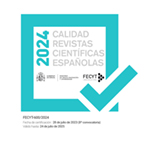A Corpus-Based Analysis of Deontic Modality of Obligation and Prohibition in Arabic/English Constitutions
چکیده
It is argued that legal language should be formal, precise and clear to avoid ambiguity and/or misunderstanding. As rights and duties are communicated through modals, clarity and precision in drafting and translating them is crucial. Otherwise, there is a possibility of conveying loose messages in the source text or different and/or inconsistent messages in the target text. However, the drafting of Arabic modal expressions does not follow clear guidelines, and their translation differs from one translator to another. This paper investigates how deontic modality of obligation and prohibition is used in The Leeds Annotated Parallel Corpus of Arabic-English Constitutions in comparison to The Leeds Monolingual Corpus of English Constitutions. More specifically, the paper presents a classification of these modal expressions and investigates the different lexical variants expressed in a Corpus of Arabic Constitutions. The paper uses corpus-based tools to analyse the different lexical forms used for deontic modality of obligation and prohibition in Arabic and how they are rendered into English. Results of such analysis are compared to a non-translated Corpus of English Constitutions to find out whether the deontic meaning of the modals is comparable to the set of deontic modals used in the constitutions originally drafted in English. The corpus-based analysis gave a detailed classification of a variety of modal expressions used in the Arabic Corpus. It also showed that the translation of deontic modals of obligation and prohibition from Arabic into English is influenced by the source text lexical variations; however, the corpus techniques employed in the study managed to capture some comparable modals in both corpora.
دانلود
##submission.format##
مجوز
La revista Estudios de Traducción, para fomentar el intercambio global del conocimiento, facilita el acceso sin restricciones a sus contenidos desde el momento de su publicación en la presente edición electrónica, y por eso es una revista de acceso abierto. Los originales publicados en esta revista son propiedad de la Universidad Complutense de Madrid y es obligatorio citar su procedencia en cualquier reproducción total o parcial. Todos los contenidos se distribuyen bajo una licencia de uso y distribución Creative Commons Reconocimiento 4.0 (CC BY 4.0). Esta circunstancia ha de hacerse constar expresamente de esta forma cuando sea necesario. Puede consultar la versión informativa y el texto legal de la licencia.









